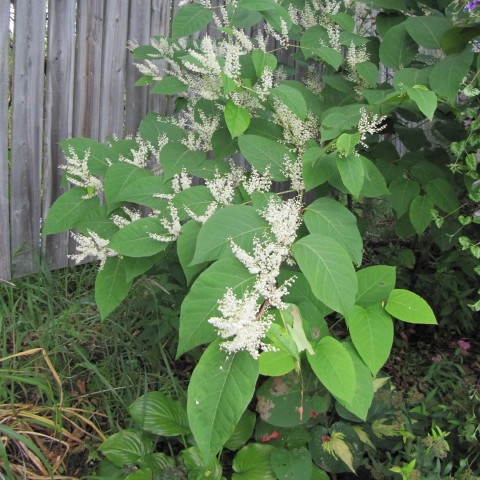Japanese knotweed is one of those plants that homeowners fear. Not only is it notoriously difficult to get rid of, but it can also cause a number of structural and legal problems too.

Photo by Leonora Enking - Licence CC BY.SA 2.0 (View Original)
Today we're taking a closer look at Japanese knotweed's capabilities to find out if it can damage foundations.
Infestation establishment
The first thing we want to talk about is the establishment of a Japanese knotweed problem. People don't always realise that the amount and severity of the damage Japanese knotweed can do depends heavily on the amount of time it's allowed to establish. A brand new infestation is unlikely to have caused serious damage to the foundations of your home. However, a Japanese knotweed infestation that has been growing for months has had plenty of time to find weaknesses to exploit both above and underground.
One of the main reasons that we recommend seeking help for a suspected Japanese knotweed problem so quickly, is because Japanese knotweed doesn't wait around. In its fastest-growing period, it can grow by as much as 10cm per day! Failure to act quickly could leave you with a number of structural problems to tackle.
Exploiting weak points
One thing that Japanese knotweed is really good at is exploiting weak points. Whether it's a crack in a wall or a hole in a drainpipe, Japanese knotweed will spread its bamboo-like shoots outwards and upwards through the tiniest spaces to reach sunlight. Sadly, the foundations of our houses are deep underground, so it's not always easy to tell whether or not they're being ravaged by a Japanese knotweed root system.
We've heard some terrible tales of homeowners discovering a Japanese knotweed problem long after it's become established under their home. One such homeowner was alerted to the problem when they saw Japanese knotweed sprouting up through their floorboards. Upon closer inspection, there was a well-established network of knotweed that found its way under their home and spread down towards the foundations.
Unfortunately for these homeowners, the problem had gone undetected for so long that there was little they could do to rectify it. If they wanted to remove the infestation for good, they would've had to excavate a lot of the soil from beneath their home. This unfortunate infestation also devalued their home quite considerably, and they would've had a very hard time putting it up for sale.
Fortunately, we don't hear stories like this very often. Most people are aware of a Japanese knotweed problem and able to treat it before it develops into something of this scale.
Read More: What Damage Can Japanese Knotweed Do?
How do I know if I have a Japanese knotweed problem?
If you're in the process of buying a new house, then your estate agent should disclose whether there is (or has been) a Japanese knotweed infestation on the property. If it's something you are really concerned about, we would recommend employing your own Japanese knotweed surveyors to assess the property before you continue with the sale.
Read More: Do Estate Agents Have to Disclose Japanese Knotweed?
It's also important that you know how to look out for signs of Japanese knotweed yourself. While it's true that Japanese knotweed can lie dormant under the soil for some time, it will always need to come to the surface for sunlight/water/nutrients at some point. If you're able to treat the plant above and below ground at this point, you can dramatically reduce the chances of the knotweed damaging your home's foundations.
Read More: Japanese Knotweed Identification
Here at Taylor Total Weed Control, we have been treating Japanese knotweed infestations for decades. We understand that the problem can often reach further than the eye can see, which is why we use a combination of special herbicides and removal techniques. You can read all about them by heading to our Japanese knotweed treatments page. Alternatively, if you have any questions, feel free to contact us.
Japanese Knotweed Treatments >
